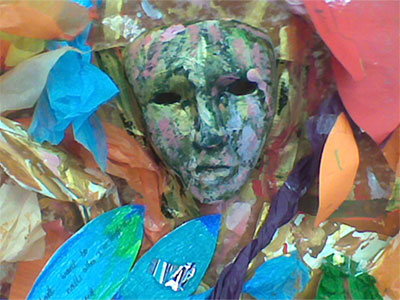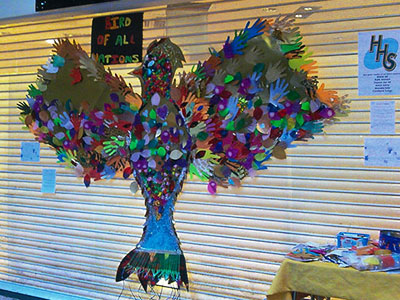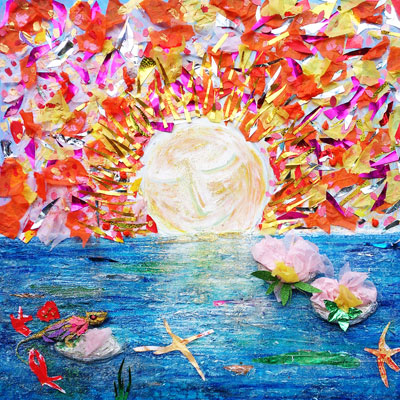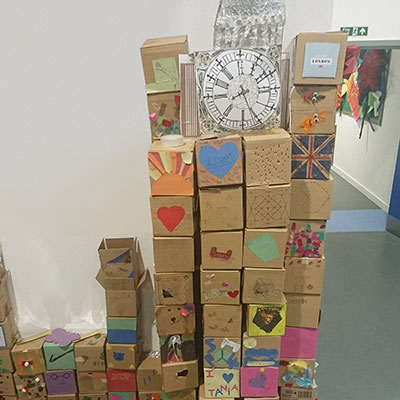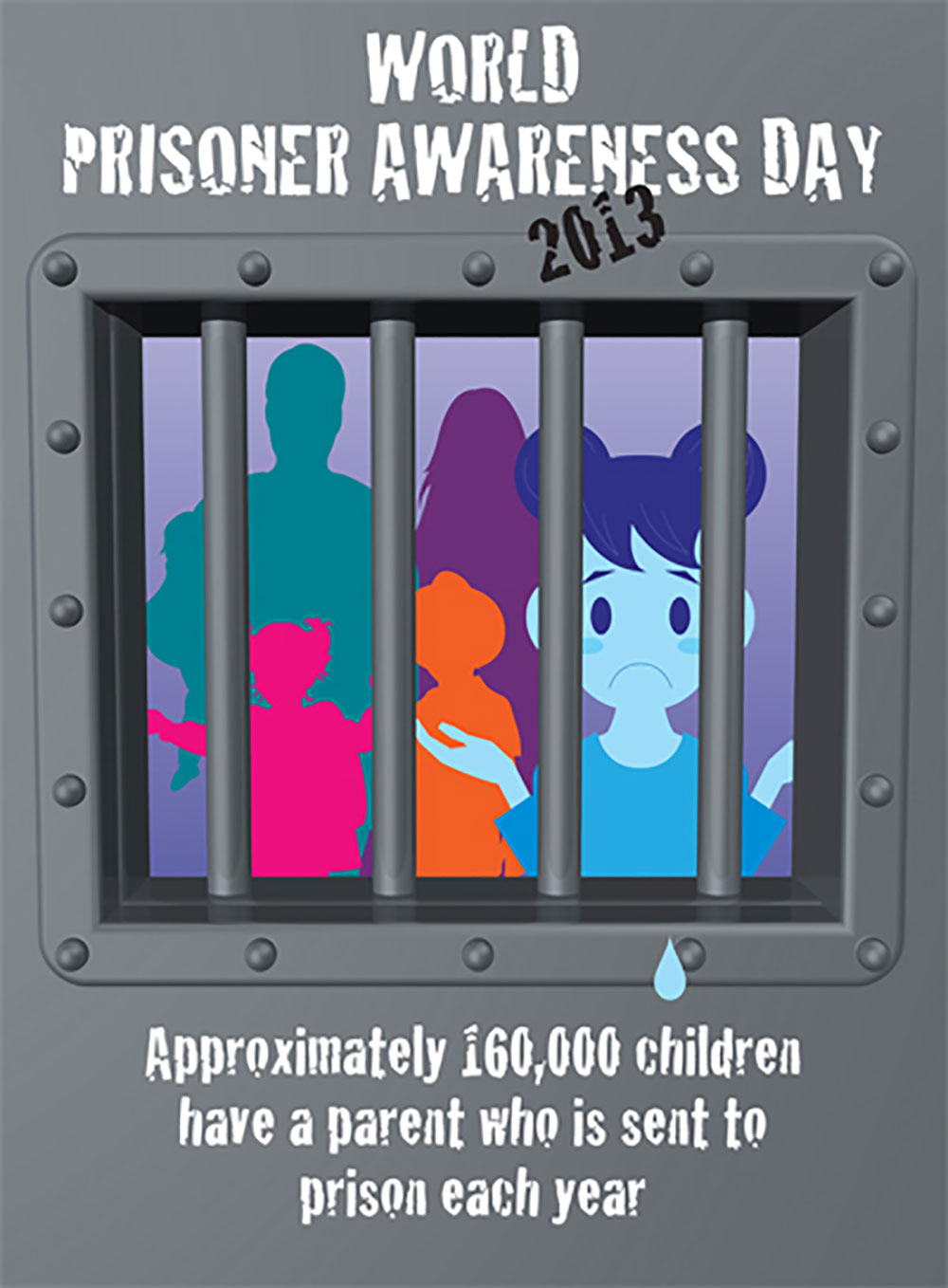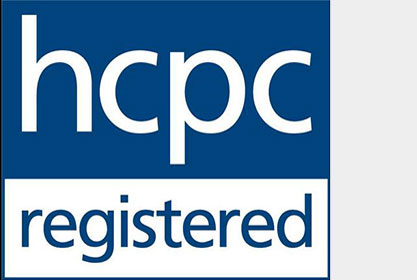Art therapy for schools
Art therapy can be effective for:
- Students experiencing emotions that are hard to understand, leading to behavioural concerns.
- Those who find social situations and communication uncomfortable.
- Students suffering with particular life events such as bereavement, changes in family structure and illness.
- Displaced people.
- Students with learning or physical needs.
- Students on the Autistic spectrum.
- Students diagnosed as having OCD, ODD, ADHD.
- Concerning behaviours associated with stress, anxiety or depression.
- Children looked after through fostering or adoption.
- Children under CPS.
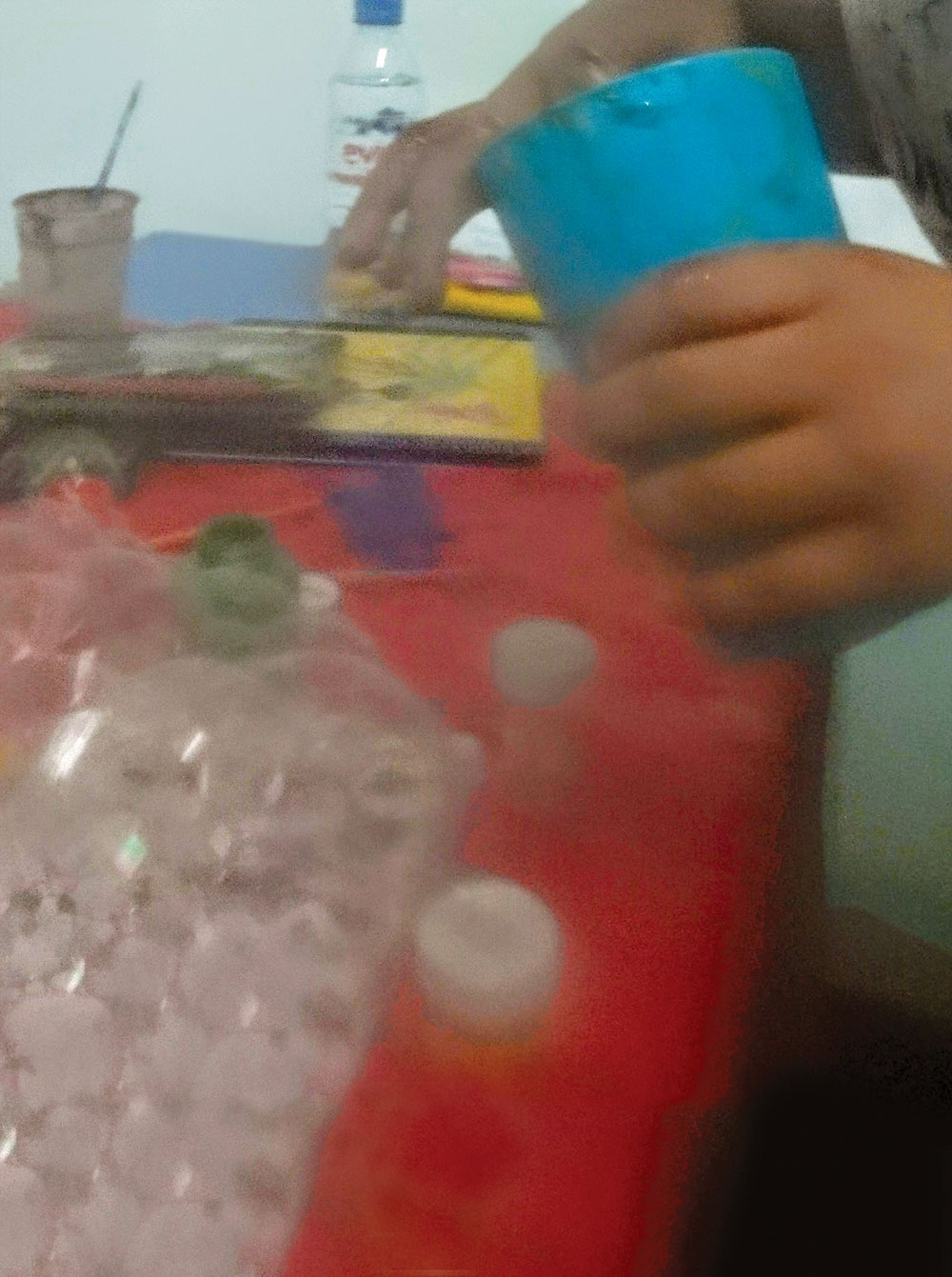
Why consider art therapy for schools?
In its simplest form it can be used to heighten self esteem and nurture confidence, these feelings can be carried into lessons and social situations.
An image can act as a bridge when words seem too painful. Some students may explore their artwork on a deeper level. With this understanding they can move on from negative emotions to nurturing self worth and self respect. This has a positive effect on behaviour.
Students sit comfortably in a creative environment, art is a natural phenomenon through which unpleasant and frightening feelings can be offloaded. The therapist can gently explore these feelings with the student.
Team work (confidential umbrella of emotional care)
Liaising closely with staff, the student’s welfare is contained within a team with trust and confidentiality.
Art therapy is a flexible part of the care structure and works as a one-off or as a number of sessions.
Creative strategies
With some children, the images created can be talked about metaphorically and an understanding of their confused feelings may be reached. For others, who do not have the ability to work in that way, the art therapist uses a mixture of creative strategies to help the child emotionally.
The importance of cards
Making cards to give a thought to someone they care about. Used for endings, making an ending bearable by acknowledging the warmth of the friendship and respecting it.
Using clay
Many 3D objects have been created and painted. Some might have a use; some are purely expressive art works. We reflect on the images in clay, discussing the feelings they evoke.
Talking metaphorically
Some students prefer talking in a visually descriptive way about how they are feeling.
Dramatic titles
Teenage students tend to enjoy dramatic themes and are able to explore many feelings creatively through these.
The importance of cartoons
Cartoons can be used to explore a real or imagined problem. Expressing anger through imagery, students seem to enjoy using cartoon images to portray anger and violence.
Dreams, nightmares and aspirations
Exploring possibilities. What is stopping us? How do we get there? In my experience students enjoy sharing their dreams. They revel in the description of nightmares and the fear that is evoked by describing every detail with a similar intensity to that of a small child. Fears and anxieties manifest themselves through dreams. Exploring the feeling from the nightmare can lead to an understanding of what is going on for that student in his/her life. His/her fears can be expressed.
The tree
The tree is one of the most celebrated images of the self according to C.J Jung. Discussed skillfully it can be an avenue to explore the fragile self, its strengths and vulnerabilities, and can give an insight into how the student might be feeling in the present.
Non-directional
Students enjoy the creative space for what it is. They have their own creative agenda and use much if not all of the art equipment available to them.
Sometimes, students whose lives are saturated with mental health professionals, social workers, counsellors and therapists wish to use the time to express themselves visually and not talk.
The cathartic value of art-making is widely acknowledged. The subconscious is a powerful enigma that is not fully understood and through my experience with young people thus far I have witnessed the immense healing potential of art making in its pure form, within a therapeutic boundary.
There seems to me to be a naturally increased sense of creative drive amongst teenagers, similar to the time of heightened creativity in small children.
During this time as a small child, images are not explored but accepted for what they are. A natural process of ‘getting rid of unpleasant feelings’ by drawing monsters etc.
Most students have talked about personal issues. The imagery having been used as a bridge between therapist and student.
The need for creative play
Some students might appear to be outwardly developing sexual beings, however there is often a fragile and vulnerable infant inside. Sometimes creative play can be used as a nurturing tool and a relationship develops through play.
Trust and communication by doodling
The doodle can be explored and reflections on the colours and lines may ensue. Doodling itself is cathartic and can serve to fuel a student’s creative juices.
The use of fantasy characters
Some students enjoy imagining that they are a particular character from a film. They take on the character’s power and fantasise about the destruction they can bring to their persecutors. These feelings can be explored and reasons for them understood.
Good and bad memories
How important to us are these memories? Why are they ingrained in our minds? Like a replay we can explore the event visually or through words or both. We have explored the imprints in our minds and reasons why they might be so strong.
The importance of flags
Some students wish to show pride in their country, despite the atrocities that might be happening there. They want to share the happy memories as well as the tragic. They need to grieve and also receive validation for the loss of their homeland.
The importance of the canvas, palette and paints. Producing complete art works
Encouraging creative self-exploration and witnessing the self-belief a student feels when he or she has achieved a self-initiated commitment to completing a piece of artwork.
Messy art
Within a contained environment, facilitating the tearing of paper saturated with paint and keeping this creative mess for further work from week to week.
How you see yourself
How do you think others see you? How would you like to be seen? This raises awareness of the images that have been given to students which they are not happy with. Heightening this awareness gives the student control and power to create an image he/she is comfortable with. The artwork may be figurative or non-figurative.
Exploring a word like “peace” or “anger”, or whichever word a student chooses
Giving a sense of the word by colour, shape etc. Sometimes the word says one thing, but the feeling the image conveys says the opposite. We discuss this phenomenon and reflect the feeling back to the student, where does it come from and what might the reason be for it?
